DJI Mavic 3 Pro Review and Comparison
 Lukas Zmejevskis
Lukas Zmejevskis
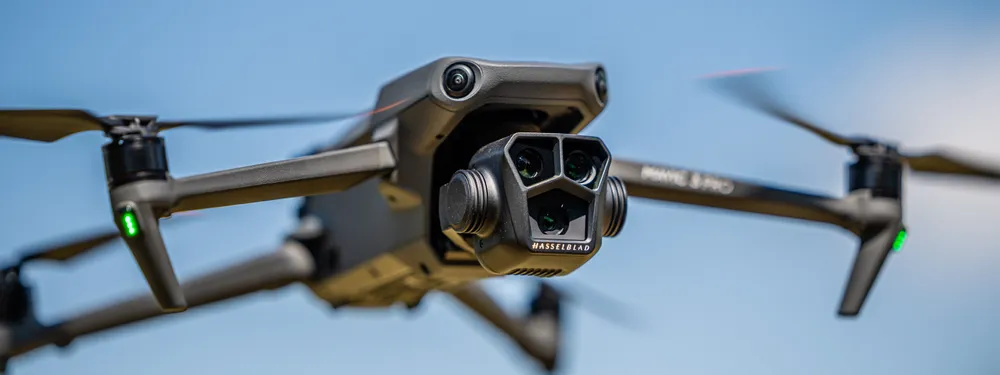
DJI Mavic 3 Pro is another addition to the Mavic 3 lineup of flagship compact foldable drones. However, it directly replaces the DJI Mavic 3, which is being phased out of production and unavailable for purchase. The Mavic 3 Pro will live alongside the Mavic 3 Classic as a more expensive option with a multi-lens/sensor camera system. In this article, we will provide a quick overview of the drone and help you decide if it is worth upgrading.
The Mavic 3 Pro has a different camera module than the other Mavics. It contains the main Hasselblad branded lens/sensor combination and two more zoomed-in modules. Below is a comparison table of all cameras on Mavic 3 drones:
| Drone | Camera Lens | Imaging Sensor | Comment |
| DJI Mavic 3 Pro | 24mm equivalent, f2.8-f11 | 20 megapixel, micro 4/3 size | Wide angle (1x) combo is the same on all drones |
| DJI Mavic 3 Pro | 70mm equivalent, f2.8 fixed aperture | 48 (12) megapixel, quad bayer, 1/1.3 inch size | Unique to the Pro version. Uses the Mini 3 pro sensors with a new lens. 3x zoom equivalent |
| DJI Mavic 3 Pro | 166mm equivalent f3.4 fixed aperture | 12 megapixel, 1/2 inch size | Updated, brighter version of the tele lens Mavic 3, 7x zoom equivalent |
| DJI Mavic 3 | 24mm equivalent, f2.8-f11 | 20 megapixel, micro 4/3 size | Wide angle (1x) combo is the same on all drones |
| DJI Mavic 3 | 162mm equivalent, f4.4 fixed aperture | 12 megapixel, 1/2 inch size | Darker and less sharp lens than the Pro, same sensor |
| DJI Mavic 3 Classic | 24mm equivalent, f2.8-f11 | 20 megapixel, micro 4/3 size | Wide angle (1x) combo is the same on all drones |

The different camera module with more lenses and sensors is heavier, and the integrated gimbal is larger. It means that besides the new imaging system, the overall drone weight increases compared to other Mavic 3s. To be precise, the Mavic 3 Pro is 63 grams heavier than the Classic or regular Mavics.
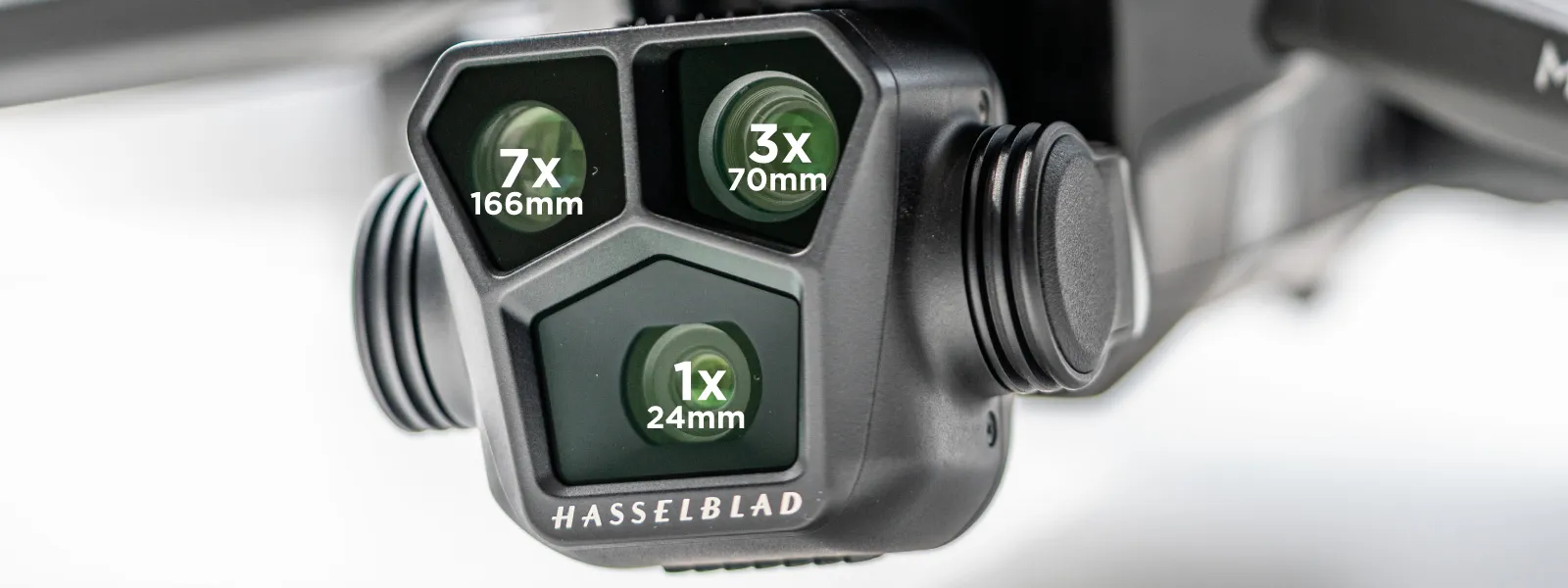
Regarding flight experience, the difference between 895 and 958 grams of total takeoff weight is negligible. But on paper, the Mavic 3 Pro can not be classified as a C1 class drone in Europe, which means it will require a higher-tier pilot's license in many cases. For some, it might be the most critical factor when choosing a drone for work. Film industry professionals may look at the Cine version of the drone, which will come with the RC Pro controller, Apple Prores codecs, and an integrated SSD - the same differences as with the Mavic 3 Cine in the past. If you are still deciding whether to get the Cine version - you probably do not need it.
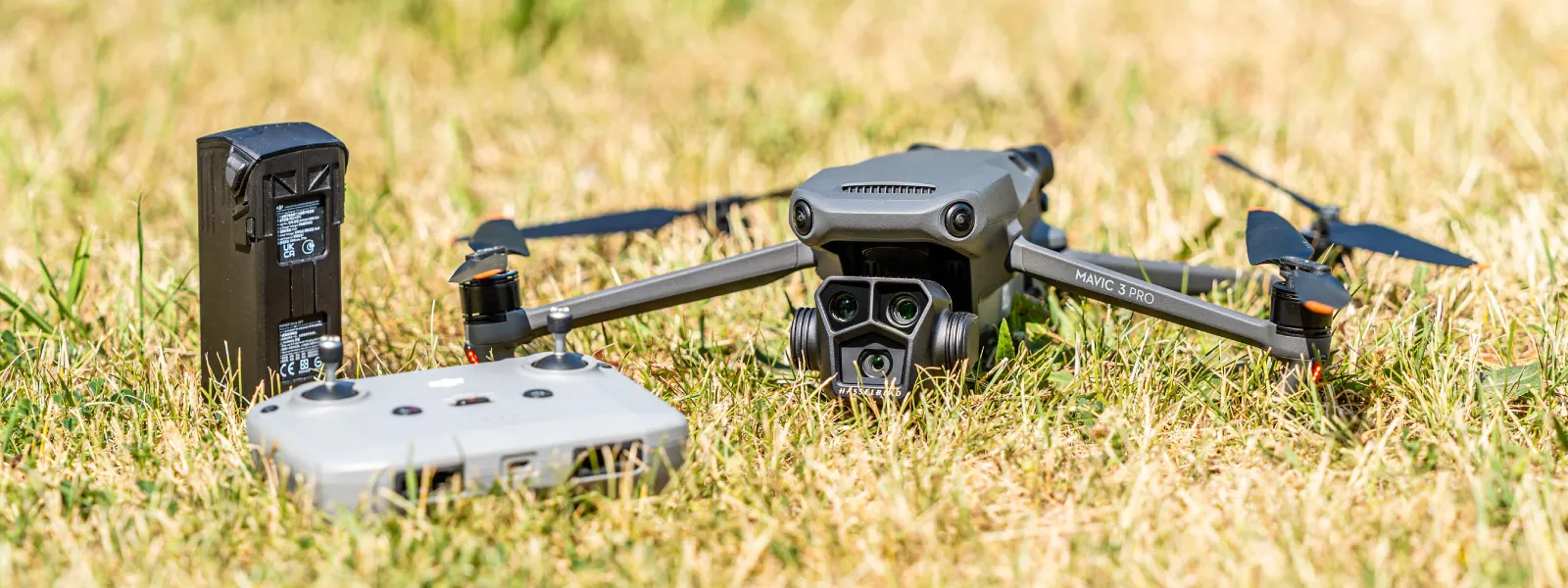
Flight Experience
As mentioned, the slight weight increase impacts the flight experience very little. You may see 2 - 4 minutes less flight time when compared to other Mavic 3s because all drones use the same batteries, so from 28 to 32 minutes of real-world flight time in good conditions. If we dig deep, the new camera adds more drag to the drone, so it reaches the top speed in a few more seconds. The overall top speed might be a couple of meters per second slower too. You can read our previous Mavic series handling impressions in these articles; a lot of it will apply to the Pro:
Mavic 3
Mavic 3 Classic
Mavic 3E
Mavic 3T
Otherwise, the flight experience is identical. The drone is responsive, omnidirectional obstacle avoidance works well, and drone control inspires confidence. The inertia is well under control, and there is no noticeable delay with the remote controller. The Mavic 3 Pro supports all usual new generation DJI remote controllers and the new DJI Motion Controller 2.

DJI Motion Controller 2 allows the drone to be paired with FPV goggles, thus cardinally transforming the flight experience. Unfortunately, it is a total gimmick without any actual real-world use. Upon connecting the DJI FPV Goggles and the Motion 2 controller, the drone turns into an fpv-like drone without any of the cameras or standard image capture features available. Also, the goggles cannot be used as a reflection-free fly app screen yet. So the overall implementation is either woefully unfinished or just an afterthought. And we are not even discussing the style of control that comes with the Motion Controller.
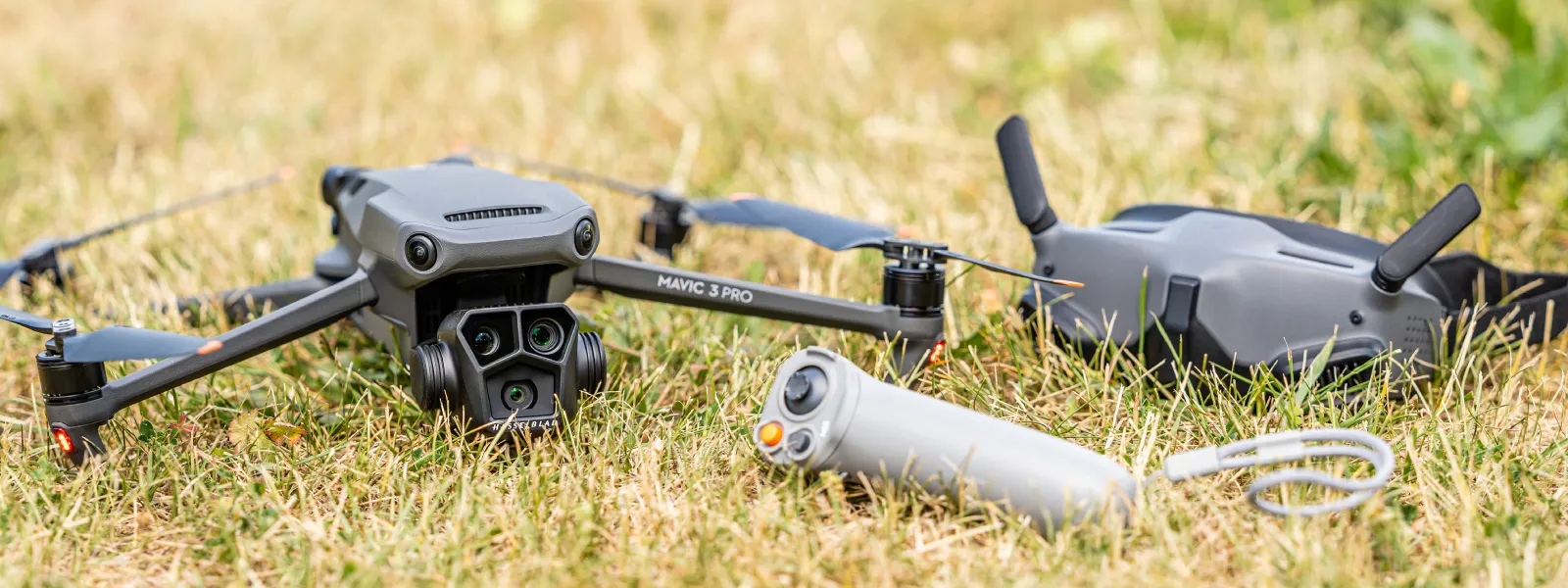
DJI Mavic 3 Pro Camera
You may consider getting the DJI Mavic 3 Pro drone over anything else only because of the camera. While the wide-angle combination is already established as the best standard flying camera you can get today, the two additional lenses and sensors are good enough to be used interchangeably in good light conditions. If you can work around all the differences and limitations of these cameras effectively, you have three different aerial perspectives. Let's summarize the differences and similarities between the three sensor/lens combinations:
Similarities:
- All combos can produce RAW and JPEG photos in all shooting modes.
- All combos can create 4k videos up to 60 frames per second at the same bitrate.
- All combos have a uniform "Normal" video color profile, which is reasonably consistent.
- The gimbal is good enough for smooth footage from all focal lengths.
- All sensors have decent electronic shutters with reasonable readout speed.
- Settings for all combos are quickly accessible and configurable separately from the FLY app.
- All cameras support tracking.
- None of the cameras have radically worse image quality than the other in good lighting conditions.
Differences:
- Video and photo quality in low light will be noticeably worse with the 7x combo.
- No DLOG-M color profile is available for the 7x camera, and no DLOG for the 3x.
- Hyperlapse shooting does not have the 7x camera available for use.
- Quick shots, master shots, night mode, slow-mo, and panorama mode do not offer 3x or 7x lens options.
- Tracking behaves slightly differently depending on the selected lens.
- The 3x and 7x cameras do not have variable apertures and will require different ND filters.
These differences are not terrible in real-world use. Intelligent modes such as quick shots or master shots are primarily for fun and targeted at beginners. Most Mavic 3 users quickly outgrow these features or never touch them. Hyperlapse with the 7x camera would be interesting. Still, you can work around that by using timed shots and cine mode/cruise control and making the hyperlapse video in post-processing. High-resolution automated panorama with a zoom lens would be fun. However, we panoramic enthusiasts will be shooting panoramas manually and stitching them in post-production anyway.
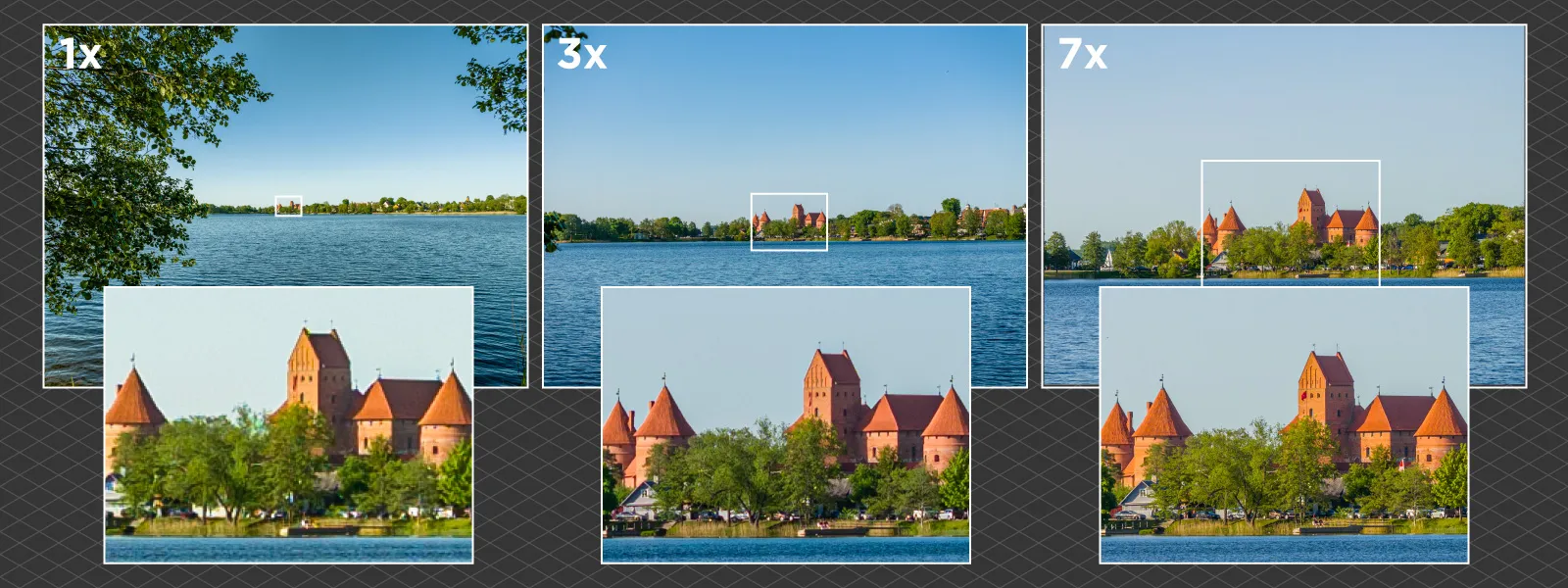
For seasoned filmmakers and drone pilots - these differences will not stifle creativity. One thing to look out for is the lesser low light capability of the 7x module. But the 3x lens and sensor combination is surprisingly good for low-light video and photos. It holds up well to the 1x.
The triple-lens/sensor combination on a single camera is a powerful tool. The different perspective the 3x and 7x cameras provide is more akin to high-budget helicopter shots or high-end drones with interchangeable lenses. Aerial telephoto footage can be magical in some situations, and videomakers will appreciate it at the reasonable price of the Mavic 3 Pro.
Additional Notes
The 7x unit is much better than the one in the Mavic 3. The lens aperture is slightly larger, letting in more light - more light means less noise. Also, the lens, in general, is sharper and much less hazy than the old one. Autofocus has also improved; it hunts less and operates faster—all welcome improvements, as expected in the second-generation product.
The 3x module has the same sensor as the Mini 3 Pro camera. Our review of this drone did not recommend using the 48-megapixel mode. It did not add more detail while compromising the rolling shutter performance and slowing down the entire operation. In the case of Mavic 3 Pro, the 48-megapixel mode provides a more noticeable increase in detail and, in some cases, might be worth the significant file size tradeoff.
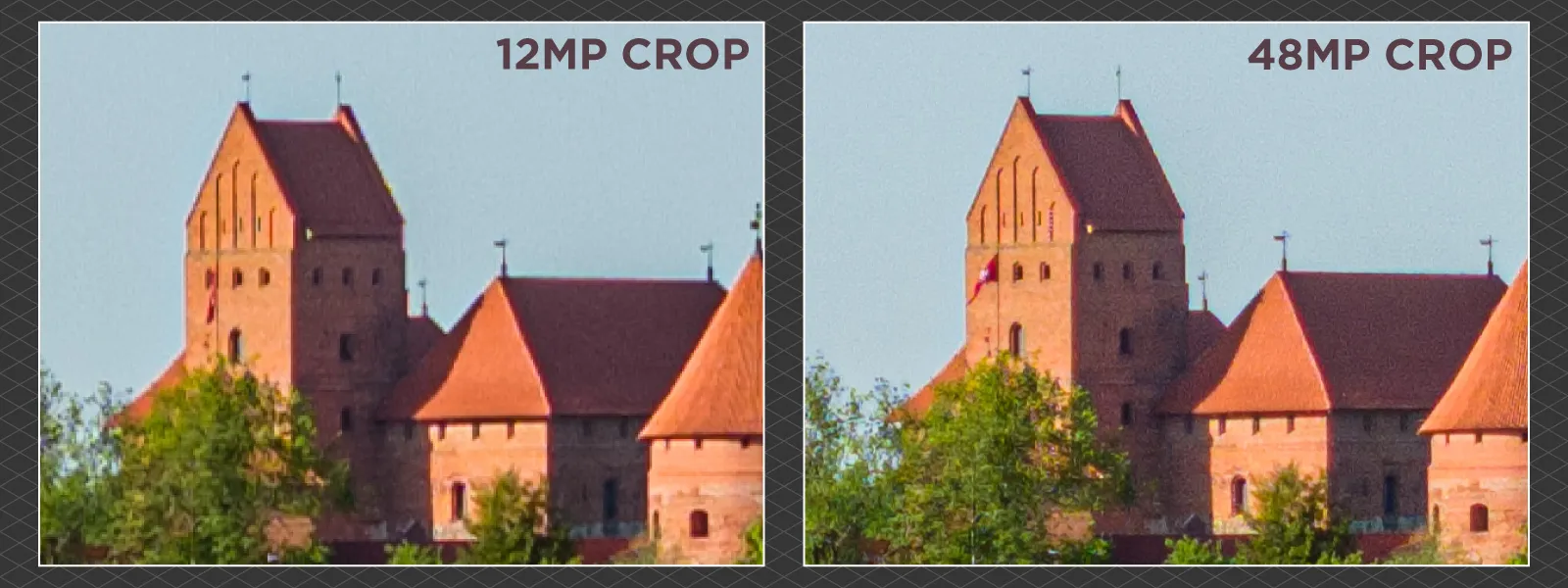
The new DLOG-M color mode is a less flat version of the DLOG logarithmic gamma profile. It is enjoyable to use and retains the 10-bit depth. It will be a good starting point for many that wish to avoid dealing with DLOG. But as always, the HLG and Normal color modes look OK with DJI products.
Conclusion
DJI Mavic 3 Pro is a good product overall. If your main priority is next-level footage and deliberately crafted photos - this is the best drone on the market. For many, the Mavic 3 Classic will remain the best price-to-performance option for aerial photography and videography. Still, it will lack the fresh perspectives of telephoto cameras. Not only that, zoom cameras could provide shots that would not be otherwise attainable due to safety or access reasons. If this is the last Mavic 3 in the lineup before the Mavic 4 comes out, it is a success and will shape the drone industry in the future.
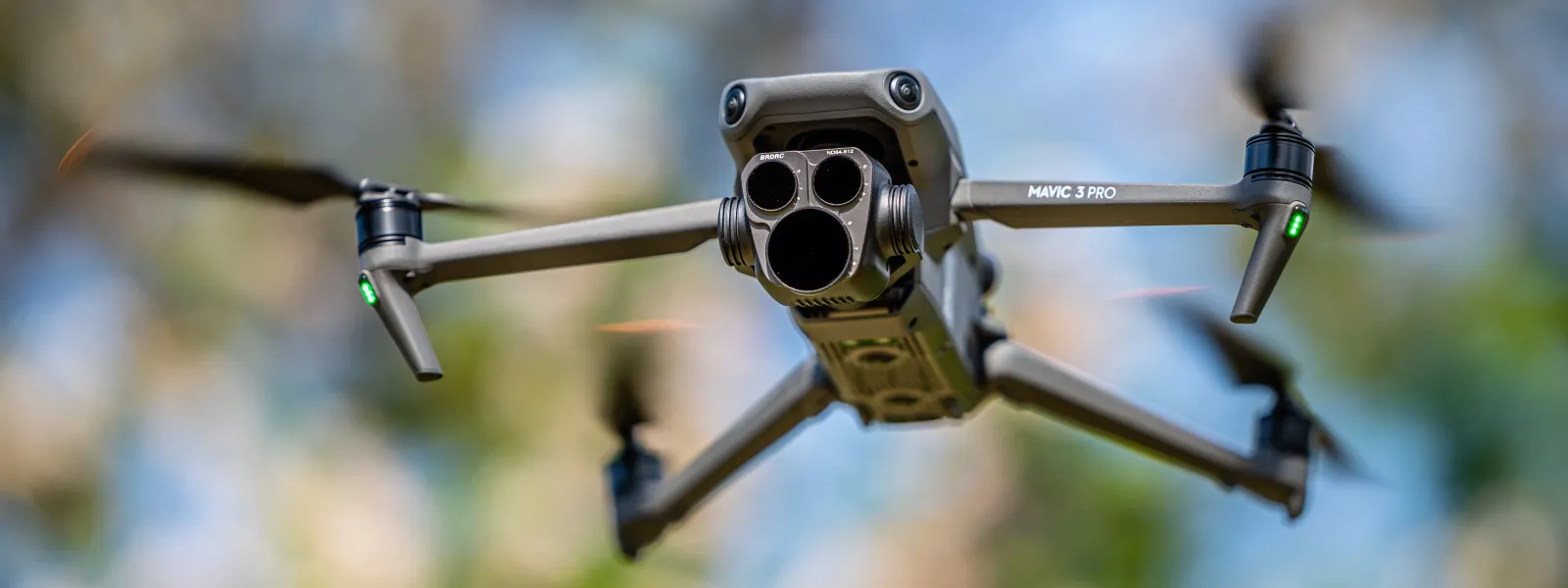

Photographer - Drone Pilot - Photogrammetrist. Years of experience in gathering data for photogrammetry projects, client support and consultations, software testing, and working with development and marketing teams. Feel free to contact me via Pixpro Discord or email (l.zmejevskis@pix-pro.com) if you have any questions about our blog.
Related Blog Posts
Our Related Posts
All of our tools and technologies are designed, modified and updated keeping your needs in mind

Photogrammetry 202 - Pixpro Blog Index
In our final blog post of the year, we are indexing Pixpro photogrammetry blog posts from the last two years. After publishing regularly for a while, things tend to scatter: posts about workflows, Pixpro features, hardware tests, random experiments, use cases, comparisons.
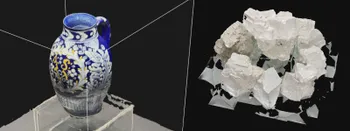
Travel Photogrammetry - More Fun than 2D Photos
Sometimes a 2D photo does not do justice to a moment or a place, and you wish you had something more… dimensional. Something that captures shape, texture, and the little details that flat images tend to flatten even more.
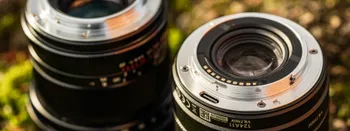
Viltrox 14mm vs. Pergear 14 mm Lens – Choosing for Interior Photogrammetry
Ultrawide-angle lenses are most commonly used in photogrammetry for interior scanning. I am planning to do an interior-type construction site scan, so I need a lens for my Sony full-frame camera. There are plenty of premium wide-angle options, but I need something that provides the best image qualit
Ready to get started with your project?
You can choose from our three different plans or ask for a custom solution where you can process as many photos as you like!
Free 14-day trial. Cancel any time.
Welcome to Pixpro
Sign in
And access your account.
.svg@webp)